
Fragment of Nelson’s Pillar, Dublin
Plinth Dates: 19 – 21 August 2011
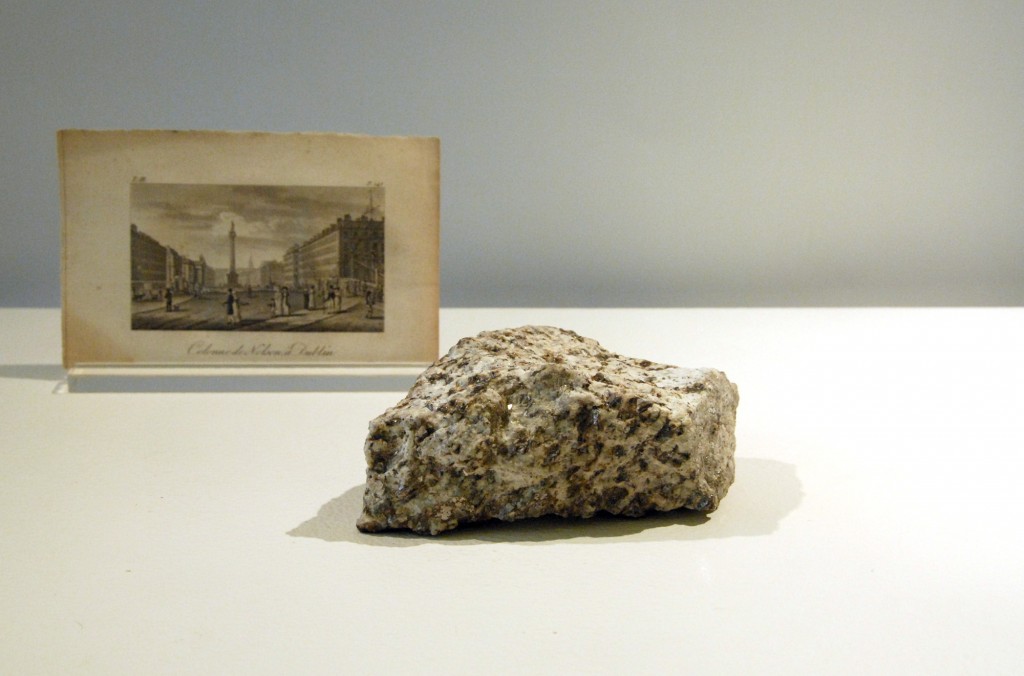
A piece of granite, formerly part of Nelson’s Pillar, Dublin
Nelson’s Pillar (not to be confused with the later Nelson’s Column in Trafalgar Square), stood in the centre of Dublin from 1808 until March 1966, when it was destroyed by a bomb planted by former members of the IRA (not considered at the time to be an active organisation).
I was in Dublin that night, on a school rugby trip from Belfast, and naturally we went to see the devastation. The pile of rubble was being ‘guarded’ by a policeman, but he wasn’t taking the whole thing very seriously and would give you a piece, if you asked.
Since this piece of granite has spent so many years on a plinth in Dublin, I thought it appropriate to give it three days more on the Fourth Plinth. If that seems short in relation to its 158 years on display in Dublin, we might remember that granite such as this from the Wicklow Mountains is about 445 million years old.
Jim Bennett
Plinth Dates: 16 – 18 August 2011
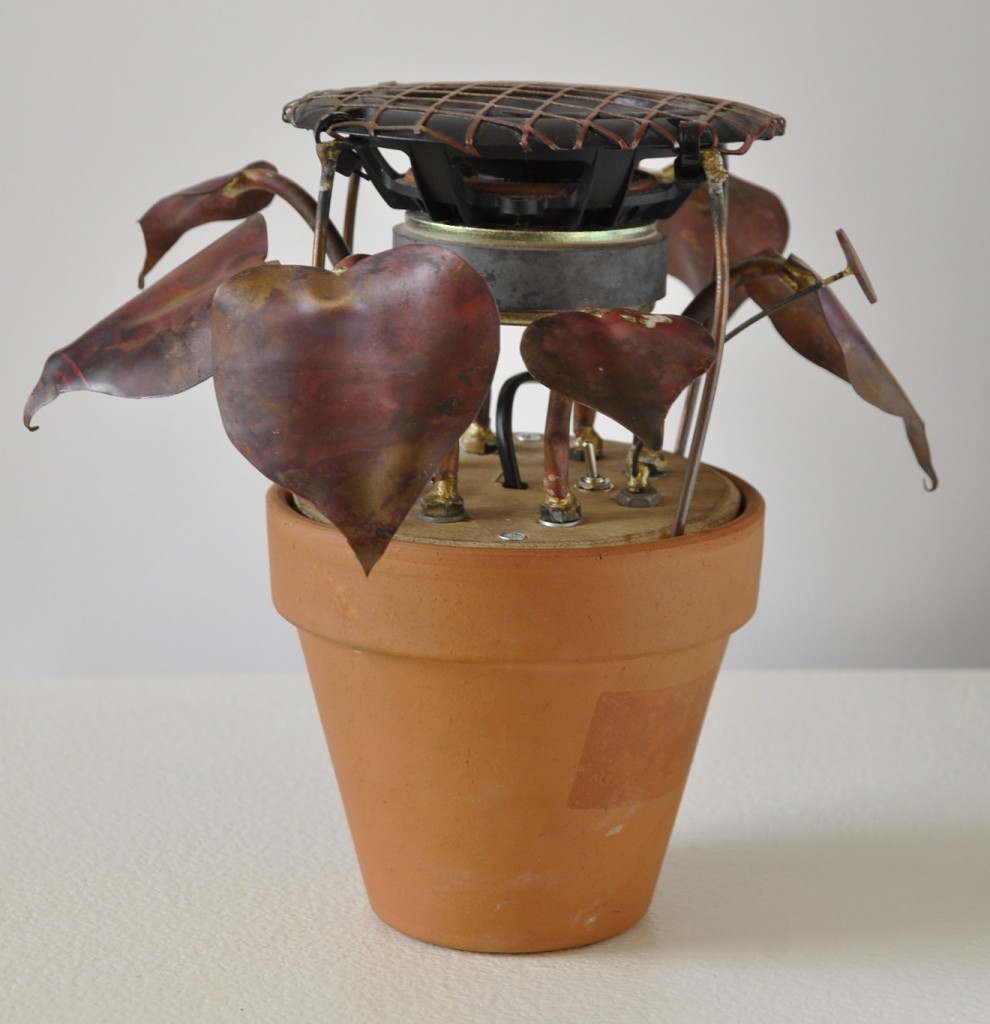
Crackleplant, mixed media, by Mike Blow, 2011
Crackleplants are sculptural musical instruments which can be played by touching combinations of leaves. Some combinations make more sound than others, as the sound of the electronic circuit is altered by skin resistance.
http://www.evolutionaryart.co.uk
Mike Blow
Image Gallery
Plinth Dates: 11 – 13 August 2011
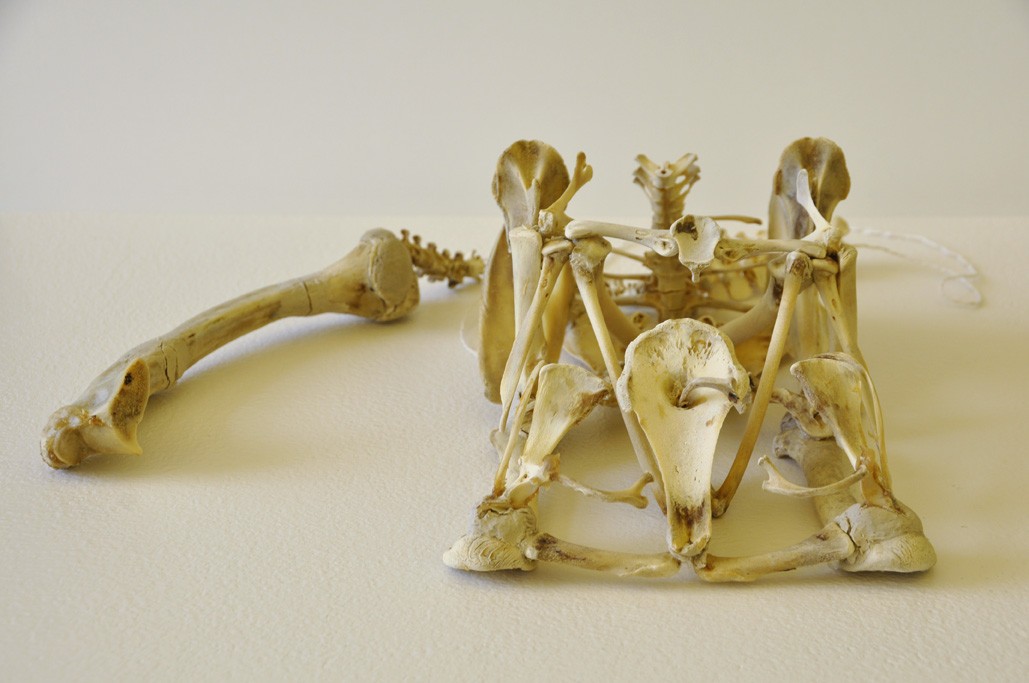
‘Dog and Bone’, by Rachel Woodruff, c.1997
I made this during my degree, combining a long held fascination with skeletons and, well, telephones. It is modelled on the classic BT phone of the 1980s that I still own. I knew I would find a home for it one day!
It is made mainly of chicken bones – boiling them made our student house smell rather interesting for a while.
Reading meaning into it today, it occurred to me that it could be viewed as a commentary on the changes in communication over the last couple of decades, perhaps even the death of real communication. Or you might just think it is an intriguing object.
Rachel Woodruff
[Editor’s note: in Cockney rhyming slang, “dog and bone” = “telephone”.]
Plinth Dates: 9 – 11 August 2011
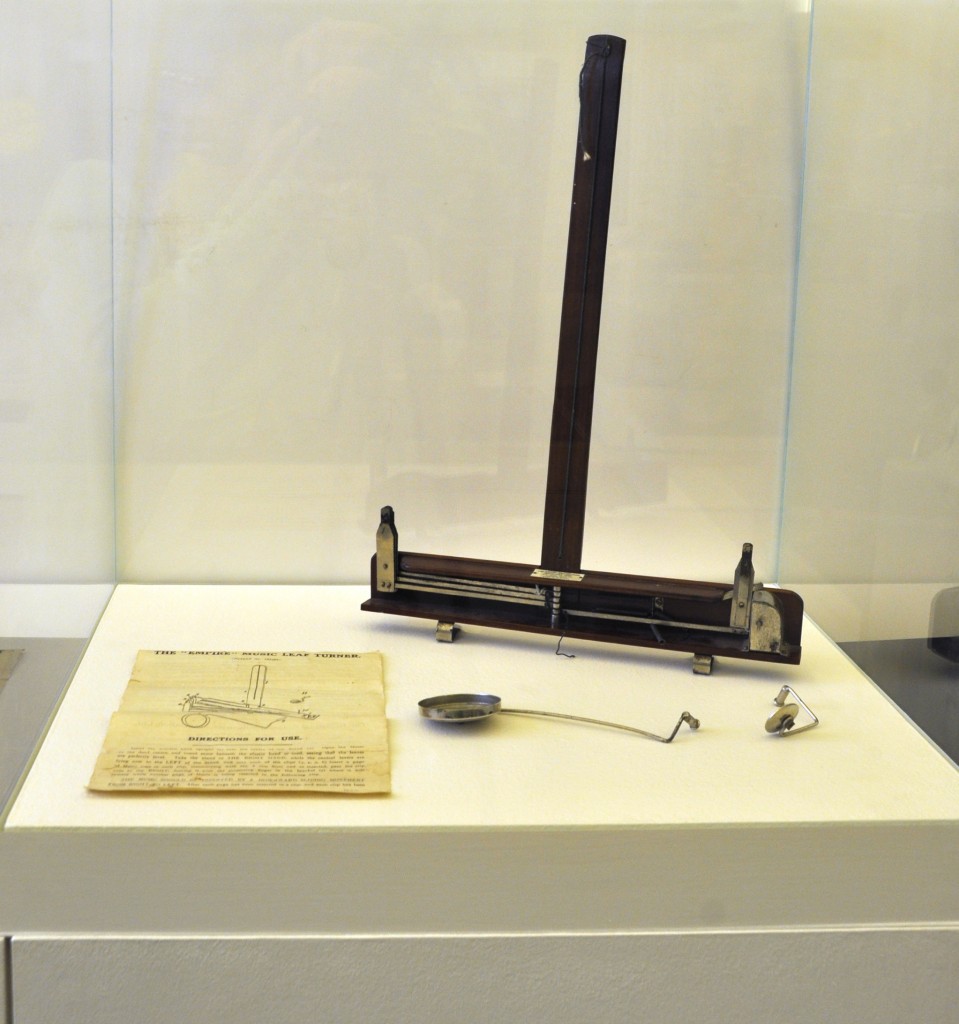
The ‘Empire’ Music Leaf Turner by the British and Colonial Industries Association, c.1890
Musicians often need to turn the pages of their music quickly, having no time to put down their violin bow or flute. A number of ingenious automatic page-turners have been devised from the nineteenth century – the conductor Charles Halle (1819-1895) is said to have invented an early one – right up to the present day. This patented example was made by the British and Colonial Industries Association in the 1890s. It operates by spring-loaded levers which are interleaved between the music pages before the performance starts. They are activated by tapping the shiny metal extension with a bow, or by blowing sharply into the cup.
Contributed by Dr Robert Anderson
A web page for images in support of the JISC eContent proposal Reanimating Early Astronomy.
-
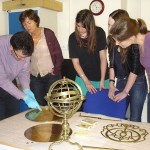
-
Dr Stephen Johnston teaching on the course “Nature and Art in the Renaissance” with instruments from the Museum of the History of Science.
-
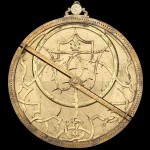
-
Astrolabe by Thomas Gemini, 1559, for Queen Elizabeth I.
-

-
Sun and stars: the rete from the astrolabe of Queen Elizabeth.
-
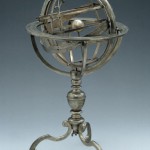
-
Armillary sphere by Carlo Plato, Rome, 1588
-
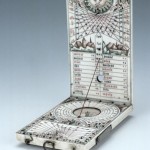
-
Diptych Dial, by Joseph Tucher, Nuremberg, 1642
-
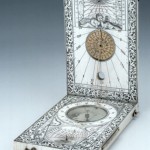
-
Diptych Dial, by Paul Reinmann, Nuremberg, 1599
-
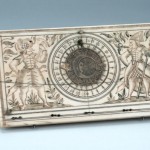
-
Diptych Dial, by a Tucher Workshop, Nuremberg, c. 1600
Antony Gormley has submitted to the Fourth Plinth a single figure from one of his ‘Field’ installations. It will be displayed as the last exhibit on our Fourth Plinth, 12-16 October 2011.
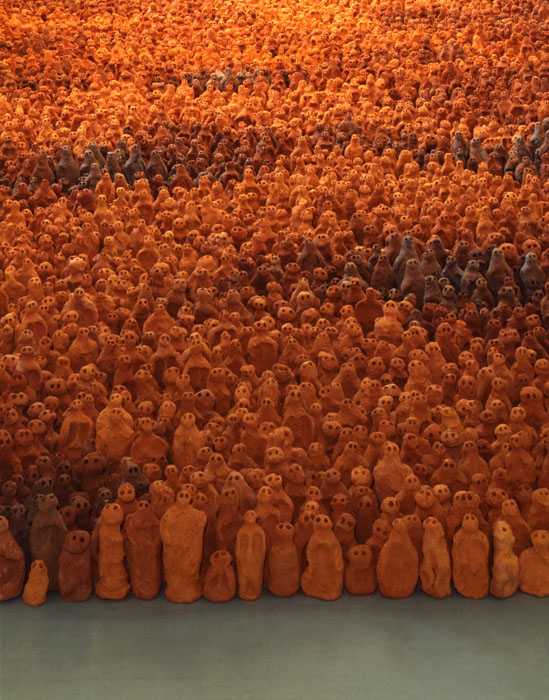
Field for the British Isles, 1993; Terracotta; Variable size: approx. 40 000 elements, each 8-26 cm tall; Installation view, Irish Museum of Modern Art, Dublin, Ireland
Plinth Dates: 2 – 7 August 2011
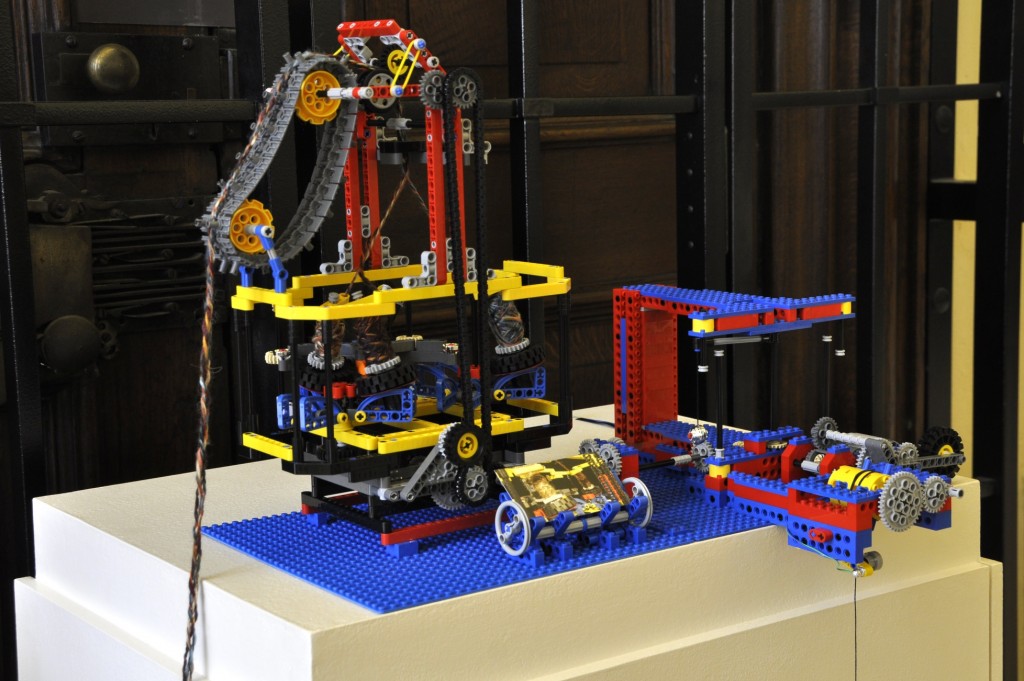
Plaiting machine made of LEGO by Alex Allmont Oxford, 2010
The LEGO Plaiting Machine slowly weaves together three yarns of wool through the force of gravity. To regulate its speed the machine uses an ornate clock escapement from the late 19th century called a ‘flying pendulum’; this escapement is very sensitive to change and can behave erratically when driving a varying load such as this complex machine. The plaiting movement is similar to that used in rope manufacture to this day.
Alex Allmont is currently studying Contemporary Art and Music at Oxford Brookes University, where this piece was presented as specialist subject work in early 2011.
This machine resets every 10 minutes.
Read a review of the Al-Mizan exhibition in the Oxford Times.
A series of public lectures has been arranged to accompany the current exhibition, ‘Al-Mizan: Sciences and Arts in the Islamic World’
Mapping the Earth in Medieval Islam
Tuesday 25 January, 7 pm
by Professor Emilie Savage-Smith, FBA
, University of Oxford.
The Power of the Word: Amulets in Islam
Tuesday 15 February, 7 pm
by Dr Venetia Porter
, the British Museum.
Star Objects: Astrolabes in Cultural Context
Tuesday 8 March, 7 pm
by Dr Silke Ackermann
, British Museum.
An animation of the oldest complete geared mechanism in the world.
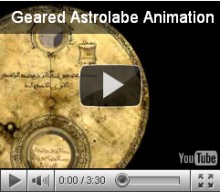
The instrument was made by Muhammad b. Abi Bakr in Isfahan in 1221/2. Further details from the collection database (MHS inv. 48213).
Published by Paul Trafford, August 19, 2011
Plinth Dates: 19 – 21 August 2011 Nelson’s Pillar (not to be confused with the later Nelson’s Column in Trafalgar... View Article
Published by Paul Trafford, August 15, 2011
Plinth Dates: 16 – 18 August 2011 Crackleplants are sculptural musical instruments which can be played by touching combinations of... View Article
Published by Paul Trafford, August 12, 2011
Plinth Dates: 11 – 13 August 2011 I made this during my degree, combining a long held fascination with skeletons... View Article
Published by Paul Trafford, August 8, 2011
Plinth Dates: 9 – 11 August 2011 Musicians often need to turn the pages of their music quickly, having no... View Article
Published by Paul Trafford, August 3, 2011
A web page for images in support of the JISC eContent proposal Reanimating Early Astronomy.
Published by Paul Trafford, August 2, 2011
Antony Gormley has submitted to the Fourth Plinth a single figure from one of his ‘Field’ installations. It will be... View Article
Published by Paul Trafford, August 2, 2011
Plinth Dates: 2 – 7 August 2011 The LEGO Plaiting Machine slowly weaves together three yarns of wool through the... View Article
Published by Paul Trafford, January 11, 2011
Read a review of the Al-Mizan exhibition in the Oxford Times.
Published by Paul Trafford, January 5, 2011
A series of public lectures has been arranged to accompany the current exhibition, ‘Al-Mizan: Sciences and Arts in the Islamic... View Article
Published by Paul Trafford, November 1, 2010
An animation of the oldest complete geared mechanism in the world. The instrument was made by Muhammad b. Abi Bakr... View Article



















